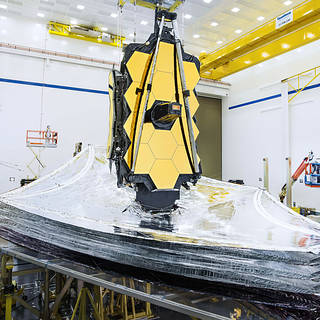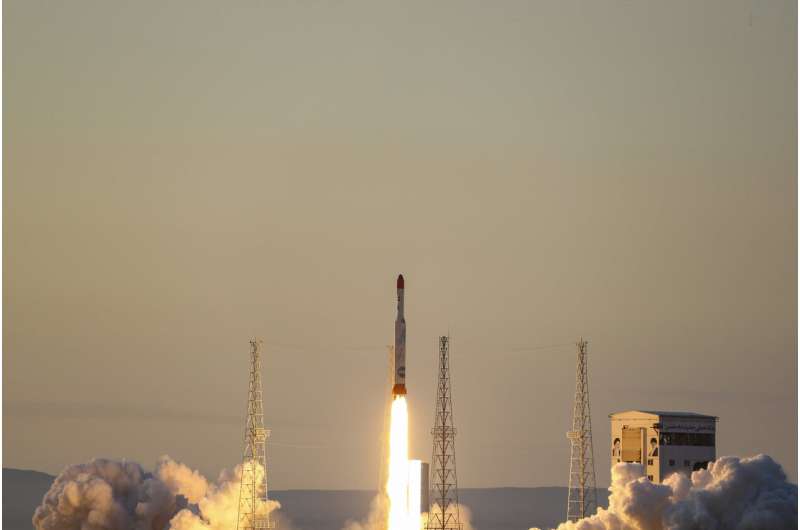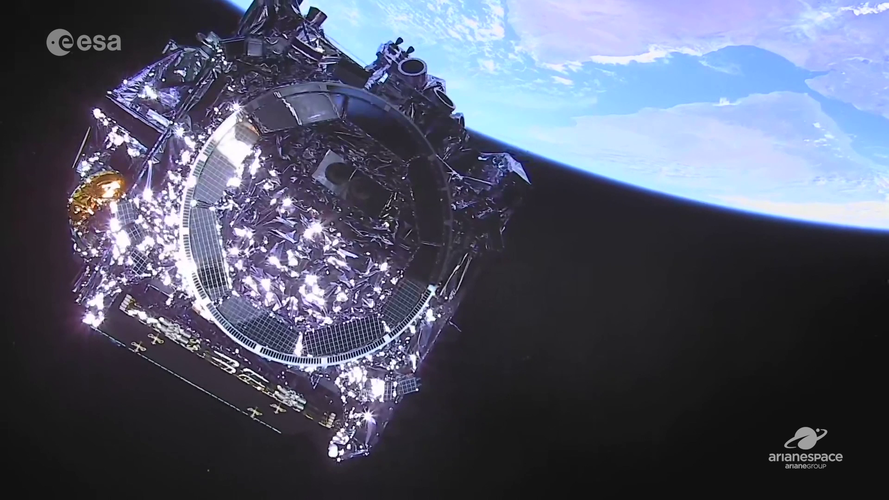
Copernical Team
Update: NASA Plans Coverage of Webb Space Telescope Deployments
 Over about the next two weeks, NASA will provide broadcast coverage, media briefings, and other updates on major deployment milestones for the James Webb Space Telescope, the world’s largest and most powerful space science telescope.
Over about the next two weeks, NASA will provide broadcast coverage, media briefings, and other updates on major deployment milestones for the James Webb Space Telescope, the world’s largest and most powerful space science telescope. Iranian state TV says Tehran launched rocket into space

NASA Plans Coverage of Webb Space Telescope Deployments
 Over about the next two weeks, NASA will provide broadcast coverage, a media briefing, and other updates on major deployment milestones for the James Webb Space Telescope, the world’s largest and most powerful space science telescope.
Over about the next two weeks, NASA will provide broadcast coverage, a media briefing, and other updates on major deployment milestones for the James Webb Space Telescope, the world’s largest and most powerful space science telescope. Webb separation from Ariane 5
 Video:
00:03:04
Video:
00:03:04
This real-time video shows the separation of the James Webb Space Telescope from the Ariane 5 launch vehicle and the subsequent solar array deployment.
Webb’s launch on an ESA-provided Ariane 5 rocket was performed by Arianespace on behalf of ESA from Europe’s Spaceport in French Guiana, at 12:20:07 GMT (13:20:07 CET) on 25 December 2021.
Webb separation from the Ariane 5 occurred at 12:47:14 GMT (13:47:14 CET) with solar array deployment starting 69 seconds later.
Thanks to Ariane 5’s highly precise launch trajectory Webb’s solar array was able to deploy soon after separation from the Ariane 5, capturing sunlight to
Putin hails multiple launch test of hypersonic missile
 President Vladimir Putin said Friday the Russian military successfully fired a simultaneous salvo of its Zircon hypersonic missiles, calling it "a big event" for the country.
As world powers race to develop advanced weaponry, Russia has carried out a number of successful tests of its Zircon hypersonic cruise missile.
This was however the first time that Russian authorities reported a su
President Vladimir Putin said Friday the Russian military successfully fired a simultaneous salvo of its Zircon hypersonic missiles, calling it "a big event" for the country.
As world powers race to develop advanced weaponry, Russia has carried out a number of successful tests of its Zircon hypersonic cruise missile.
This was however the first time that Russian authorities reported a su China launches Tianhui 4 satellite into orbit
 China launched the Tianhui 4 satellite into space on Wednesday evening from the Jiuquan Satellite Launch Center in northwestern China's Gobi Desert, according to China Aerospace Science and Technology Corp.
The State-owned space contractor said the satellite was deployed by a Long March 2D carrier rocket that blasted off at 7:13 pm and has entered orbit.
Tianhui 4, built by the compa
China launched the Tianhui 4 satellite into space on Wednesday evening from the Jiuquan Satellite Launch Center in northwestern China's Gobi Desert, according to China Aerospace Science and Technology Corp.
The State-owned space contractor said the satellite was deployed by a Long March 2D carrier rocket that blasted off at 7:13 pm and has entered orbit.
Tianhui 4, built by the compa Satellogic to build high-throughput manufacturing plant in Netherlands
 Satellogic, a leader in sub-meter resolution satellite imagery collection, announced that it will be constructing a high-throughput satellite manufacturing facility in the Netherlands.
This 57,000 square foot new location is expected to accelerate the company's assembly of satellites and accommodate its state-of-the-art manufacturing, integration, and testing equipment. In addition to havi
Satellogic, a leader in sub-meter resolution satellite imagery collection, announced that it will be constructing a high-throughput satellite manufacturing facility in the Netherlands.
This 57,000 square foot new location is expected to accelerate the company's assembly of satellites and accommodate its state-of-the-art manufacturing, integration, and testing equipment. In addition to havi James Webb telescope completes tower extension
 The James Webb Space Telescope continued to deploy perfectly Wednesday as it flew over 360,000 miles from Earth on a million-plus-mile journey to its destination.
The latest maneuver for the $10 billion observatory was to extend its Deployable Tower Assembly, which hoists the giant gold reflective mirror a little further from the thruster and heat shield.
The tower extension occu
The James Webb Space Telescope continued to deploy perfectly Wednesday as it flew over 360,000 miles from Earth on a million-plus-mile journey to its destination.
The latest maneuver for the $10 billion observatory was to extend its Deployable Tower Assembly, which hoists the giant gold reflective mirror a little further from the thruster and heat shield.
The tower extension occu Carbonaceous chondrite impact responsible for lunar water: study
 A Chinese research team has found that a meteorite hit the moon about one million years ago through data sent by the Chang'e-4 probe, according to the Chinese Academy of Sciences (CAS).
The impact event is believed to be related with carbonaceous chondrites, a water-rich class of asteroids, according to Liu Yang with the National Space Science Center (NSSC) under the CAS, corresponding aut
A Chinese research team has found that a meteorite hit the moon about one million years ago through data sent by the Chang'e-4 probe, according to the Chinese Academy of Sciences (CAS).
The impact event is believed to be related with carbonaceous chondrites, a water-rich class of asteroids, according to Liu Yang with the National Space Science Center (NSSC) under the CAS, corresponding aut Virgin Orbit expected to list on NASDAQ
 NextGen Acquisition Corp. II stockholders has approved the previously-announced business combination with Vieco USA, Inc., the parent company of Virgin Orbit ("Virgin Orbit" or the "Company"), at a special meeting of stockholders held. A Form 8-K disclosing the full voting results is expected to be filed with the Securities and Exchange Commission.
Also, NextGen and the Virgin Group announ
NextGen Acquisition Corp. II stockholders has approved the previously-announced business combination with Vieco USA, Inc., the parent company of Virgin Orbit ("Virgin Orbit" or the "Company"), at a special meeting of stockholders held. A Form 8-K disclosing the full voting results is expected to be filed with the Securities and Exchange Commission.
Also, NextGen and the Virgin Group announ 
































